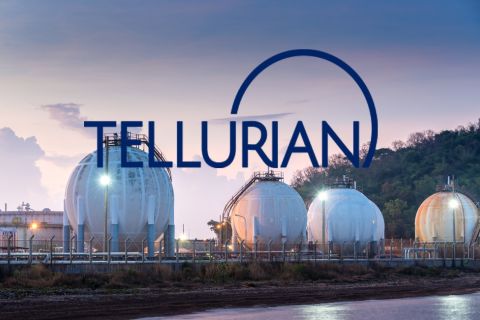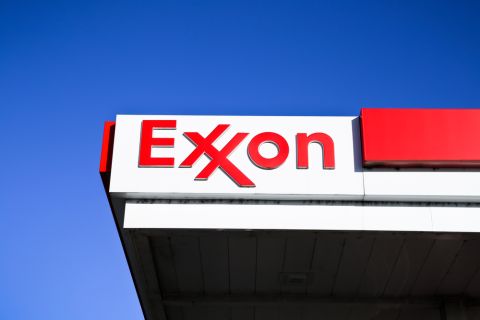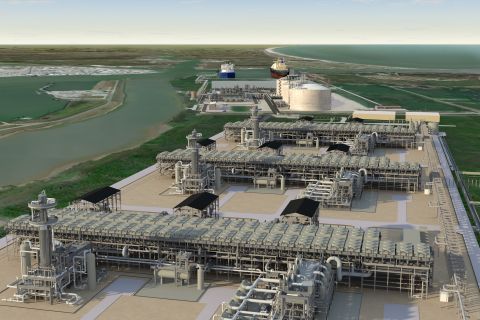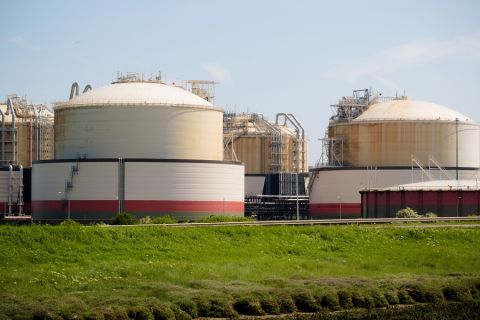In the brave new world of $35 to $40 oil, it's astonishing that the share prices of offshore drillers, after a brief market surge this spring, have retrenched to levels that suggest crude is trading in the mid-$20s or lower. As of mid-June, the shares of Transocean had retreated to $26.10 from a recent high of nearly $32; those of Global SantaFe, to $24.30 from $30.69; Ensco, to $26.52 from $30.79; and Noble Corp., to $34.73 from nearly $43. At first blush, one might be tempted to accept conventional market wisdom that this is to be expected in light of disciplined capital spending and a greater focus on returns by major oils and independents. Also, analysts may well point out that commodity prices are beginning to ease from their recent lofty highs. These views, however, exclude the salient fact that global non-OPEC production is currently outstripping reserve replacement through the drillbit, and that at some point-sooner than later-upstream operators are going to have to step up exploration for new reserves or watch their asset bases dwindle-at the very time global oil demand is growing 1.7% annually. While Wall Street is notorious for being fixated on companies meeting or beating consensus earnings estimates for the next quarter, most patient investors in the E&P sector want to see a visible expansion of reserve bases-without which future, long-term growth in production volume and cash flow are unsustainable. True, much reserve expansion in recent years has come about through aggressive M&A activity; however, the cost of buying reserves in the stock market has gotten a tad pricey of late. "With the recent ramp-up in E&P stocks and reserve values...drilling is looking more attractive in the fight for E&P company capital," say analysts at Pickering Energy Partners, a newly formed Houston-based oil and gas research firm. In short, independents and major oils like Royal Dutch/Shell, which has drastically revised its reserves downward, are going to have to spend a lot more drilling dollars in high-impact, frontier regions-including the ultradeep offshore-to improve their reserve/production ratios. Indeed, Royal Dutch/Shell has already upped its 2004 upstream capital spending budget 40% to $11.8 billion-some of that aimed at deepwater development-according to Simmons & Co. International in Houston. S. Magnus Fyhr, a Houston-based oil-service analyst for Jefferies & Co., says that "the outlook for offshore drilling shares remains bright for 2004." The analyst points out that jackup-rig activity is poised to increase in several international markets in second-half 2004 due to firm oil fundamentals and the increasing global demand for natural gas and liquefied natural gas (LNG). "The markets that will likely experience the largest increases in rig demand during the next 12 months will be [those] driven by the buildup of LNG infrastructure, particularly in the Middle East, Southeast Asia, Australia and Trinidad," he says. In line with this demand forecast and limited rig availability in some regions, Fyhr expects operators to contract rigs out of offshore markets with idle capacity-primarily the Gulf of Mexico, the North Sea and West Africa. Meanwhile, he expects the ultradeepwater rig market to rebound and come into balance by late 2004 or early 2005 due to an increase in exploration and development activity offshore West Africa and stepped-up exploration in the deepwater Gulf of Mexico. The stocks of those drillers with leverage to a recovery in the global deepwater market and increasing demand in the international jackup market should attract investor attention most, he says. They include Transocean, Global SantaFe and Noble Corp., as well as Atwood Oceanics as a small-cap play on the deepwater. In its broader outlook for global drilling activity, Pickering Energy Partners is forecasting a total 2004 worldwide rig count of 2,360-up 9% from 2003-and a rig count of 2,448 in 2005-another 4% gain. Our view is that the recent ebb tide in the stocks of offshore drillers will soon end, and that drillers with a balanced rig portfolio are poised to reap the most benefit, in terms of rising dayrates, improved earnings and stock-price appreciation.
Recommended Reading
FERC Approves Extension of Tellurian LNG Project
2024-02-19 - Completion deadline of Tellurian’s Driftwood project was moved to 2029 and phase 1 could come online in 2027.
Exxon’s Guyana Gas Project a “Win-Win,” Set for Hook-up by Year-end ‘24
2024-04-26 - Exxon Mobil Corp. CEO Darren Woods said the company’s gas-to-power project in Guyana as a “win-win proposition particularly for the people of Guyana” when completed and hooked-up by year-end 2024.
Shipping Traffic Freezes Up in Port Waters After Baltimore Bridge Collapse
2024-03-26 - U.S. port of Baltimore traffic was suspended until further notice following a bridge collapse. At least 13 vessels expected to load coal were anchored near the port at the time of the incident.
Segrist: The LNG Pause and a Big, Dumb Question
2024-04-25 - In trying to understand the White House’s decision to pause LNG export permits and wondering if it’s just a red herring, one big, dumb question must be asked.
Venture Global, Grain LNG Ink Deal to Provide LNG to UK
2024-02-05 - Under the agreement, Venture Global will have the ability to access 3 million tonnes per annum of LNG storage and regasification capacity at the Isle of Grain LNG terminal.




